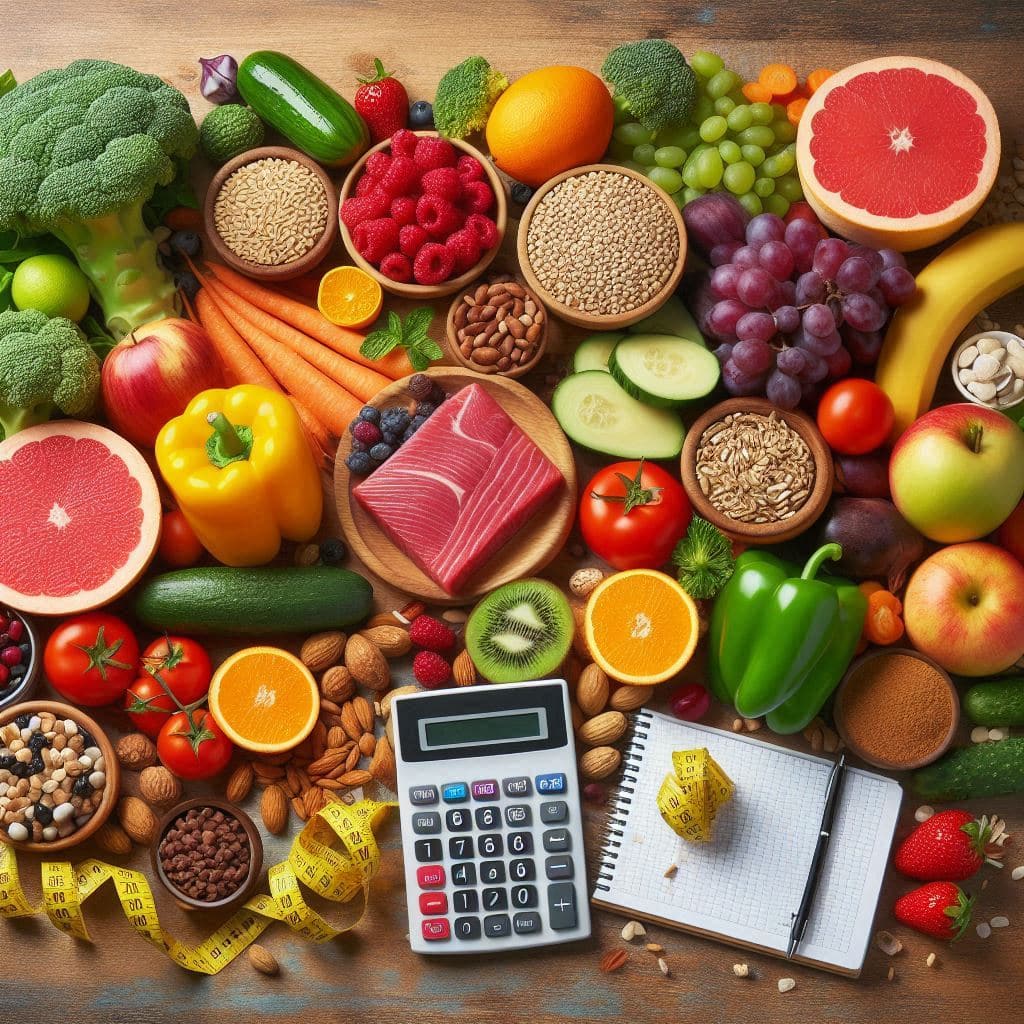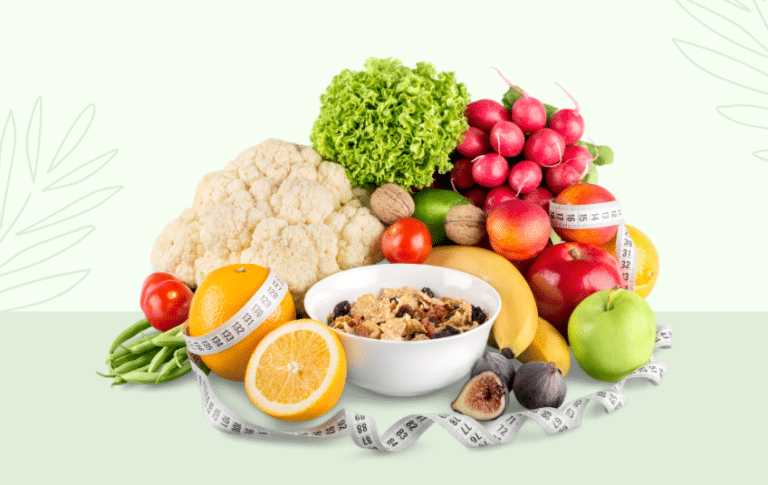Understanding The Basics Of Calorie Counting
I’m going to take you through the ins and outs of understanding the basics of calorie counting and trust me; it’s not just about weight loss—it’s about gaining insight into your eating habits and taking control of your health. Calorie counting is a method that can help unveil the energy you consume from food, shedding light on dietary patterns that could be essential for managing your well-being.
By tracking the energy you consume from food, you can identify dietary patterns crucial for managing your well-being. In this guide, we’ll explore the nuances of calorie counting, debunk common myths, and provide tips so you can manage calories in your daily life.

The True Nature of Calories
Many people view calories as the primary adversary in their weight management journey. However, calories are simply units of energy that our bodies need to function. Every activity requires energy, from breathing and sleeping to running and thinking. Therefore, understanding calories and how they work can be a powerful ally in maintaining or achieving a healthy lifestyle.
Misconceptions About Calories
One common misconception is that all calories are equal, regardless of their source. However, the quality of calories matters significantly. For instance, 200 calories from a donut and 200 calories from a serving of mixed vegetables will affect your body differently.
The donut, high in sugar and fat, can lead to drops and spikes in blood sugar levels, resulting in hunger pangs and energy crashes. On the other hand, vegetables, rich in fiber and nutrients, provide sustained energy and keep you feeling fuller longer.
The Principle – ‘Calories In vs. Calories Out’
That concept of ‘calories in vs. calories out‘ is foundational to understanding energy balance. It suggests that the number of calories consumed must equal the number of calories burned to maintain weight.
We’ve all heard the saying “calories in, calories out.” It’s true: weight management boils down to calorie balance. If you consistently consume more calories than your body burns, the excess gets stored as fat, leading to weight gain.
Conversely, burning more calories than you consume forces your body to tap into stored fat, resulting in weight loss. While this principle seems straightforward, it’s essential to investigate the factors influencing this balance.
Macronutrients and Their Roles
Not all calories are created equal, and the macronutrients—proteins, fats, and carbohydrates—play unique roles in energy and overall health.
Proteins: Proteins are essential for building and repairing tissues throughout your body. They also have a unique advantage – protein’s thermic effect is higher than carbs and fats. In simpler terms, your body burns more calories digesting protein. This contributes to maintaining muscle mass and can potentially boost your metabolism.
Fats: Fats are necessary for hormone production, nutrient absorption, and cell membrane integrity; fats are calorie-dense but essential in moderation. Healthy fats like nuts, olive oil, and avocados contribute to overall health.
Carbohydrates: Carbohydrates are the body’s primary energy source, fueling everything from daily activities to intense workouts. However, the type of carbohydrate matters—complex carbs like vegetables and whole grains provide sustained energy, while simple carbs like sugar can lead to energy spikes and crashes.
The Art and Science of Measuring Calories: Tools and Techniques
Calorie counting can be daunting but becomes manageable and enlightening with the right tools and techniques. Here are some indispensable tools and methods to streamline the practice and help you stay on track.
Reading Food Labels
Understanding food labels is fundamental to effective calorie counting. It’s more than the total calorie count; serving sizes can be misleading. For example, a package may list 150 calories per serving, but if it contains two servings and you consume the entire package, you’re consuming 300 calories.
Additionally, food labels provide valuable information about macronutrient content—carbohydrates, proteins, and fats—which helps you assess the quality of your calories.

Leveraging Technology
Modern technology has revolutionized calorie counting, making it easier and more accurate. Numerous apps can log your meals, scan barcodes, and provide nutrient breakdowns of foods. These tools bring convenience and help you stay accountable and aware of your eating habits. Popular apps like MyFitnessPal, Lose It!, and Cronometer offer extensive databases of foods and recipes, allowing you to track your intake with precision.
Estimating Calorie Content
Estimating calorie content can be challenging for homemade meals or dining out, but it is an invaluable skill. Portion control is critical—visual cues can help you gauge serving sizes when nutritional information isn’t available.
For example, your protein should be roughly the size of a deck of cards, and the pasta should fit in the palm of your cupped hand.” Over time, you’ll develop a better sense of portion sizes, making it easier to estimate calories on the go.
Tips for Successful Calorie Counting
Transforming calorie counting from a concept into a practical tool for better health involves creating a sustainable lifestyle change. Here are some tips to help you succeed:
Start Simple and Set Realistic Goals
When beginning your calorie counting journey, set achievable targets based on your dietary needs and health goals. Don’t worry about getting everything perfect from day one; the key is to start and refine your approach as you go. Set realistic, incremental goals that build confidence and momentum.
Practice Mindfulness and Body Awareness
Calorie counting should be paired with mindfulness and body awareness. Pay attention to your hunger cues and satisfaction levels. It’s not just about the numbers; it’s about enjoying your food and listening to your body’s needs. Chew slowly and enjoy every taste! This mindful approach to eating allows you to connect with your body’s signals and prevent overeating.
Plan for Challenges
Social events, holidays, and cravings can disrupt your calorie-counting efforts. Planning can help you navigate these challenges. For example, if you’re attending a party, have a light snack beforehand to avoid overeating. If you indulge in a high-calorie treat, balance it with lighter daily meals. Remember, moderation is key—indulgences are part of life and shouldn’t derail your efforts.
Advanced Techniques for Effective Calorie Counting
As you become more comfortable with calorie counting, you can incorporate advanced techniques to enhance your accuracy and understanding.

Tracking Macronutrient Ratios
Beyond total calorie intake, paying attention to your macronutrient ratios can optimize your diet for specific goals. For example, if you aim to build muscle, you might increase your protein intake.
Conversely, if you’re focusing on endurance sports, you might prioritize carbohydrates. Many calorie-counting apps allow you to set and track macronutrient goals, providing a comprehensive view of your nutrition.
Periodic Adjustments
Your calorie needs may change over time based on factors like weight loss, muscle gain, or changes in physical activity. Periodically reassess your calorie goals and make adjustments as needed. This flexibility ensures that your calorie-counting efforts align with your evolving health and fitness objectives. Here is a calorie calculator that will help you out.
Incorporating Non-Dietary Factors
Calorie counting is essential to weight management, but a healthy lifestyle goes beyond what you are eating. Quality sleep, stress management techniques, and regular exercise are essential for lasting well-being and a healthy weight. When combined with mindful eating habits, these factors create a holistic approach to health.
Seeking Professional Guidance
If calorie counting seems overwhelming or you have specific dietary requirements, consulting a registered dietitian or nutrition professional can provide personalized guidance. These experts can help tailor a plan that meets your unique needs and preferences, ensuring you sustainably achieve your health goals.
Overcoming Obstacles
At times, you might experience obstacles where progress stalls despite consistent effort. This is normal and can be addressed with professional help. A dietitian can analyze your habits, identify potential issues, and recommend strategies to overcome these obstacles, keeping you motivated and on track.
Managing Medical Conditions
Professional guidance is essential for individuals with medical conditions such as diabetes, hypertension, or digestive disorders. A dietitian will create a customized plan that considers your medical needs, ensuring that calorie counting supports your overall health and well-being.
Long-Term Sustainability
The ultimate goal of calorie counting is to build lasting, healthy habits. It’s not about meticulous tracking forever but about developing awareness and making informed choices you can maintain over the long term.
Creating a Balanced Approach
A balanced approach to calorie counting involves flexibility and self-compassion. Allow occasional indulgences without guilt, and focus on overall patterns rather than daily fluctuations. This mindset fosters a positive relationship with food and prevents burnout.
Transitioning from Tracking
Once you’ve developed a strong understanding of your dietary needs and habits, you may transition away from daily tracking. Instead, use the knowledge gained to make mindful decisions. Trust your ability to recognize portion sizes, balance macronutrients, and listen to your body’s signals.
Summary
Calorie counting is a powerful tool for gaining insight into your eating habits and taking control of your health. You can transform this practice into a sustainable lifestyle by understanding the true nature of calories, leveraging modern tools, and incorporating mindfulness.
The goal is small steps and significant results! Celebrate progress, not perfection. You can achieve a balanced, healthy lifestyle with patience, persistence, and the right approach. Here’s to making informed choices and finding the right balance for you!
Are you interested in learning more about 10 Delicious Healthy Dinner Ideas Under 500 Calories? I’ve written a whole blog post about it—check it out!
Engage with Me!
Ask Questions: Do you have questions or feedback? Could you share them in the comments below? Thank you!




Lately, I have had some difficulty with my knees. My doctor has said that excess weight makes the problem worse. He has given me a diet, but I think that the calorie counting as you describe it is more what i am looking for. With bad knees comes a decrease in physical activity which cause weight gain. I will have to start at the easiest level because I have never done this. I do need to loose fat so I assume that calories without fat are for me. I have bookmarked both the calorie counter and dinner menu. Thanks for introducing the concept of calorie counting.
Jim
Hi Jim,
I’m glad you like the concept of calorie counting and that you’ve found the blog helpful.
Starting at the most accessible level is a great approach, especially considering knee issues. It’s crucial to balance your diet and manage your calorie intake while ensuring you’re still getting the necessary nutrients.
Healthy fats are essential for your body, and the key is to focus on portion control and making healthier food choices.
As you begin this journey, consult a dietitian or nutritionist who can tailor a plan to your specific needs and health conditions. They can guide you in balancing your meals and ensure you get all the essential nutrients.
Good luck, and feel free to reach out if you have any questions or need further assistance!
Best,
Michael